| Weight | 1 lbs |
|---|---|
| Dimensions | 9 × 5 × 2 in |
| host | mouse |
| isotype | IgG |
| clonality | monoclonal |
| concentration | concentrate, predilute |
| applications | IHC |
| reactivity | human |
| available size | 0.1 mL, 0.5 mL, 1 mL concentrated, 7 mL prediluted |
rabbit anti-Langerin monoclonal antibody (ZR170) 6240
Price range: $160.00 through $528.00
Antibody summary
- Rabbit monoclonal to Langerin
- Suitable for: Immunohistochemistry (formalin-fixed, paraffin-embedded tissues)
- Reacts with: Human
- Isotype:IgG
- Control: skin/Langerhans cell histiocytosis
- Visualization: cell surface/cytoplasm.
- 0.1, 0.5, 1.0 mL concentrated, 7 mL prediluted
rabbit anti-Langerin monoclonal antibody ZR170 6240
| target relevance |
|---|
| Protein names C-type lectin domain family 4 member K (Langerin) (CD antigen CD207) |
| Gene names CD207,CD207 CLEC4K |
| Mass 36725Da |
| Function FUNCTION: Calcium-dependent lectin displaying mannose-binding specificity. Induces the formation of Birbeck granules (BGs); is a potent regulator of membrane superimposition and zippering. Binds to sulfated as well as mannosylated glycans, keratan sulfate (KS) and beta-glucans. Facilitates uptake of antigens and is involved in the routing and/or processing of antigen for presentation to T cells. Major receptor on primary Langerhans cells for Candida species, Saccharomyces species, and Malassezia furfur. Protects against human immunodeficiency virus-1 (HIV-1) infection. Binds to high-mannose structures present on the envelope glycoprotein which is followed by subsequent targeting of the virus to the Birbeck granules leading to its rapid degradation. {ECO:0000269|PubMed:10661407, ECO:0000269|PubMed:17334373, ECO:0000269|PubMed:20026605, ECO:0000269|PubMed:20097424}. |
| Subellular location SUBCELLULAR LOCATION: Membrane {ECO:0000269|PubMed:10661407}; Single-pass type II membrane protein {ECO:0000269|PubMed:10661407}. Note=Found in Birbeck granules (BGs), which are organelles consisting of superimposed and zippered membranes. |
| Tissues TISSUE SPECIFICITY: Exclusively expressed by Langerhans cells. Expressed in astrocytoma and malignant ependymoma, but not in normal brain tissues. {ECO:0000269|PubMed:10661407, ECO:0000269|PubMed:20026605}. |
| Structure SUBUNIT: Homotrimer. {ECO:0000269|PubMed:12626394}. |
| Domain DOMAIN: The C-type lectin domain mediates dual recognition of both sulfated and mannosylated glycans. {ECO:0000269|PubMed:20026605}. |
| Involvement in disease DISEASE: Birbeck granule deficiency (BIRGD) [MIM:613393]: A condition characterized by the absence of Birbeck granules in epidermal Langerhans cells. Despite the lack of Birbeck granules, Langerhans cells are present in normal numbers and have normal morphologic characteristics and antigen-presenting capacity. {ECO:0000269|PubMed:15816828, ECO:0000269|PubMed:16567809}. Note=The disease is caused by variants affecting the gene represented in this entry. |
| Target Relevance information above includes information from UniProt accession: Q9UJ71 |
| The UniProt Consortium |
Data
 |
| Formalin-fixed, paraffin-embedded human Langerhans cell histiocytosis stained with anti-langerin antibody using peroxidase-conjugate and DAB chromogen. Note cytoplasmic staining of tumor cells |
Publications
| pmid | title | authors | citation |
|---|---|---|---|
| We haven't added any publications to our database yet. | |||
Protocols
| relevant to this product |
|---|
| IHC |
Documents
| # | SDS | Certificate | |
|---|---|---|---|
| Please enter your product and batch number here to retrieve product datasheet, SDS, and QC information. | |||
Only logged in customers who have purchased this product may leave a review.

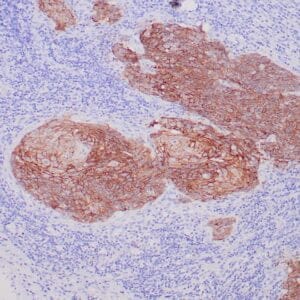

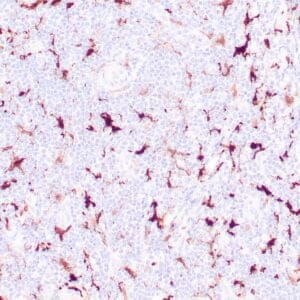


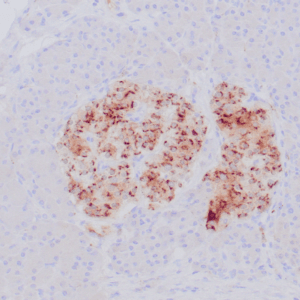

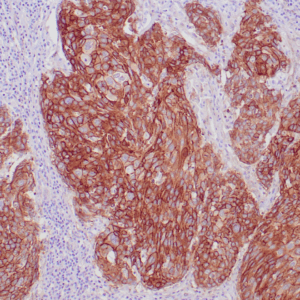


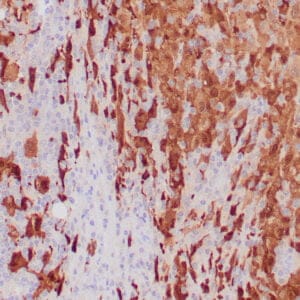

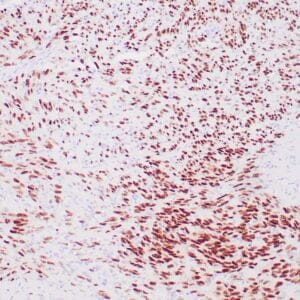
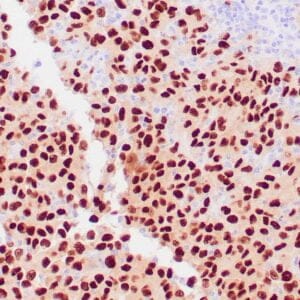
Reviews
There are no reviews yet.